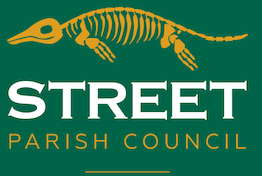Top ten facts about Street
- Street is the largest village in Somerset with more facilities than many small towns.
- Street is the home of C&J Clark International Ltd, trading as Clarks, the British-based international shoe manufacturer and retailer founded in 1825 by Quaker brothers Cyrus and James Clark. Also, it boasts Clarks Village, the country’s first Outlet Shopping Village which gets up to 4 million visitors a year.
- Street has many of leading Norwich-based architect, George Skipper’s, finest buildings including two terraces in Wilfrid Road, the Clock Tower on the Clarks headquarters, The Crispin Hall and Millfield House.
- Street is the home of Millfield School which has been represented at every Olympic Games since 1956, and at the 2012 Olympics in London Millfield was the most represented British school.
- Marshall’s Elm, Street, was the site of one of the earliest skirmishes of the English Civil War. On 4th August 1642, the Royalist Sir John Stawell led a troop against John Pyne M.P. for Poole’s soldiers, to prevent them from reaching Shepton Mallet.
- Laurence Housman, the playwright, writer and illustrator, moved to Street, Somerset in 1924 where he lived the last 35 years of his life.
- Street has an open-air Art Deco pool called Greenbank, which is Grade 2 listed and built in 1937 as a gift to the people of Street from Alice Clark.
- Street was the birthplace of John Wilfrid Hinde (17 May 1916 – 26 December 19970), an English photographer, whose idealistic and nostalgic style influenced the art of postcard photography and was widely known for his meticulously planned shoots.
- Gustav Holst conducted an orchestra in Street’s Crispin Hall in 1922 to accompany a piece by Alice Buckton.
- The ‘Welcome to Street’ sign and the emblem of Street Parish Council shows an ichthyosaur. The discovery of ichthyosaurs remains in Street in the early 1800s, and many excavated in Street are today displayed at the Natural History Museum.
Want to read a fuller history of Street, see British History online at STREET @ BRITISH HISTORY ONLINE

